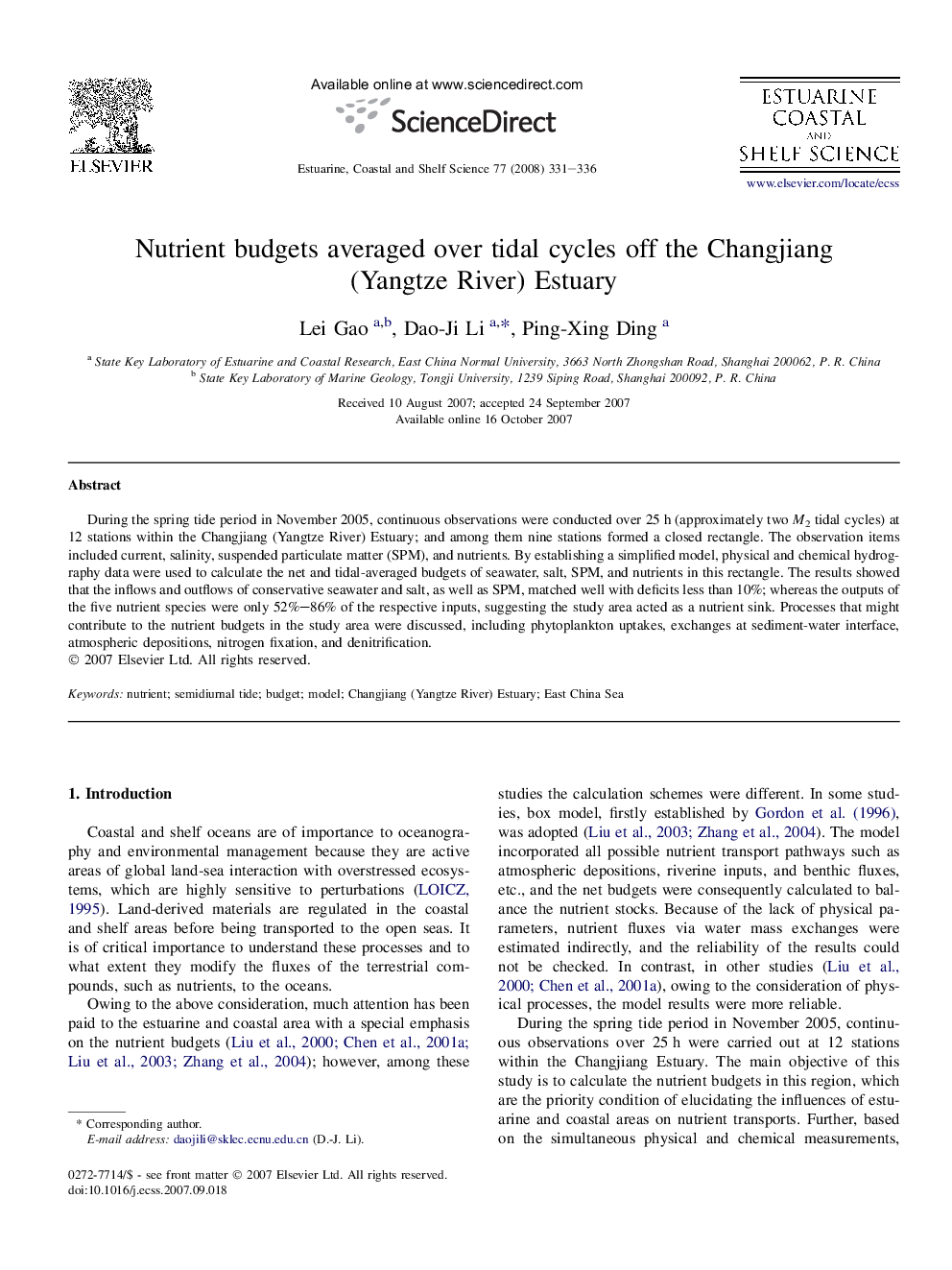| Article ID | Journal | Published Year | Pages | File Type |
|---|---|---|---|---|
| 4541658 | Estuarine, Coastal and Shelf Science | 2008 | 6 Pages |
During the spring tide period in November 2005, continuous observations were conducted over 25 h (approximately two M2 tidal cycles) at 12 stations within the Changjiang (Yangtze River) Estuary; and among them nine stations formed a closed rectangle. The observation items included current, salinity, suspended particulate matter (SPM), and nutrients. By establishing a simplified model, physical and chemical hydrography data were used to calculate the net and tidal-averaged budgets of seawater, salt, SPM, and nutrients in this rectangle. The results showed that the inflows and outflows of conservative seawater and salt, as well as SPM, matched well with deficits less than 10%; whereas the outputs of the five nutrient species were only 52%–86% of the respective inputs, suggesting the study area acted as a nutrient sink. Processes that might contribute to the nutrient budgets in the study area were discussed, including phytoplankton uptakes, exchanges at sediment-water interface, atmospheric depositions, nitrogen fixation, and denitrification.
